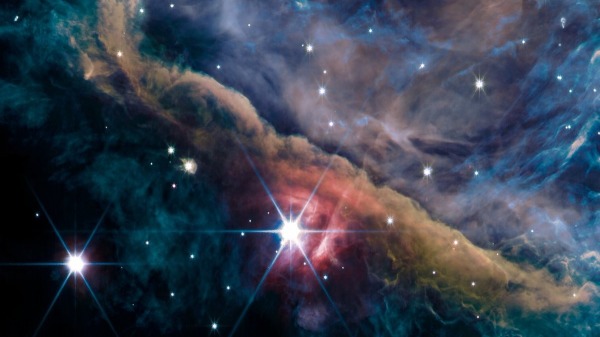On September 12, 2022, NASA released an image of the Orion Nebula taken by the Webb Space Telescope. (NASA) (16:9)
[See China September 13, 2022 News](See Chinese reporter Xiao Ran compiled/comprehensive report)NASA) posted by James on September 12Webb Space TelescopeNew image taken.Orion Nebulastar forming region‘Beautiful’ images reveal stars andplanetIntricate details of how the system is formed.
The images reveal an environment similar to our solar system, which formed more than 4.5 billion years ago. Observing the Orion Nebula will help space scientists better understand what happened during the first million years of planetary evolution in the Milky Way, Western University astrophysicist Peters said in a news release.
“We were blown away by the stunning images of the Orion Nebula. We started the project in 2017, and we’ve waited more than five years to get the data,” Peters said. “These new observations allow us to better Learn how massive stars change the gas and dust clouds from which they were born.”
The heart of a stellar nursery like the Orion Nebula is obscured by massive amounts of stardust, making it impossible to use instruments like the Hubble Space Telescope, which rely primarily on visible light, to study what’s going on inside, according to a NASA press release. Webb, on the other hand, can detect cosmic infrared light, allowing observers to see through these layers of dust into the depths of the Orion Nebula.
“Observing the Orion Nebula is a challenge because it’s so bright for Webb’s unprecedentedly sensitive instruments. But Webb is incredible, Webb can see distant, faint galaxies, as well as Jupiter and Orion, the brightest spots in the infrared sky. One of the brightest sources of light,” said Olivier Berné, a research scientist at CNRS, the French National Centre for Scientific Research.
The new images reveal many structures inside the nebula, including the central protostar surrounded by a disk of dust and gas called “Prolyds,” where planets form.
“We have never been able to see the intricate details of how interstellar matter is structured in these environments, nor have we been able to figure out how planetary systems are formed under such intense radiation. These images reveal the systems of the interstellar medium in planets,” France Associate Professor Emilie Habart of the Institute of Astrophysics (IAS) said.
In the center of the Orion Nebula, young, massive stars in the Trapezium cluster are also clearly visible, forming clouds of dust and gas through intense ultraviolet radiation, NASA said. Understanding how this radiation affects the cluster’s surroundings is key to understanding the formation of star systems.
“Giant young stars emit large amounts of ultraviolet radiation directly into the native cloud that still surrounds them, which alters the physical shape of the cloud and its chemical composition. How it works and how it affects further star and planet formation is unknown. I know,” Peters said.
The new images will be studied by PDRs4All, an international collaboration of more than 100 scientists from 18 countries.
Webb unraveled the mysteries of the universe and continued to announce new discoveries
NASA released the first full-color scientific images of the $10 billion Webb Space Telescope on July 12, demonstrating that a new era of astronomy has arrived.
Since the beginning of August, NASA has successively released the “Cartwheel galaxy” (Cartwheel galaxy) captured by the Webb telescope,Jupiteras well as”Tarantula Nebula“Image.
The Webb telescope saw Jupiter’s faint rings and moons called Amalthea and Adrastea, which are a million times fainter than Jupiter. Jupiter is the largest planet in the solar system and is considered to be the third brightest planet in Earth’s night sky after the moon and Venus.
In early September, the Webb Space Telescope photographed the Tarantula Nebula, a galaxy about 160,000 light-years away from Earth, and observed a gathering of thousands of never-before-seen young stars.
NASA said that such a scene has never been seen before in the history of astronomy. “This nebula allows us to see the process of how stars formed at the peak of the history of the universe,” and mentioned that the star-forming regions in the Milky Way cannot be similar to the Tarantula Nebula. New stars are created at an astonishing rate. Therefore, astronomers are attracted to study and observe the Tarantula Nebula.
Source: Watch China
Short URL for this article:
All rights reserved, any form of reproduction is subject to the authorization of China. The establishment of mirror websites is strictly prohibited.
[Honorary Member Wanted]Streams can merge into the sea, and small kindness can achieve great love. We sincerely solicit 10,000 honorary members from Chinese people all over the world: each honorary member only needs to pay a subscription fee every year to become an honorary member of the “Watch China” website. Provide independent and true key information, warn them in times of crisis, and save them from the great plague and other social crises.

